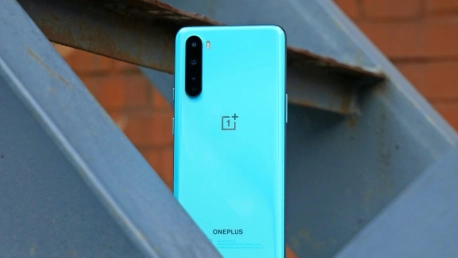OnePlus Technology is a Chinese smartphone and gadget manufacturer headquartered in Shenzhen, founded by Pete Lau and Carl Pei in December 2013. The first phone came to market in 2014 and took an unconventional approach at the time, offering an “invite-only” sales system to buy the phone. How OnePlus, a startup with zero marketing budget, managed to become one of the world’s top phone makers is a cool story.
It All Started with an Unhappy Android User
It all started when Pete Lau, the founder, CEO and Chief Product Officer of OnePlus, wasn’t happy with his Android-based device. The former Oppo employee came up with the idea to create OnePlus, a line of premium devices to challenge the status quo in the industry and focus more on user needs.
A design expert with experience in both product and user areas, Lau often refers to himself as the company’s “Chief Product Officer”. All he wanted was the user experience to be “burdenless” and to make it as easy, efficient and unrestricted as possible for the user community.
1.5 Million Phones Sold with Zero Marketing Budget
The first phone was launched in 2014 as part of an innovative marketing campaign whereby only members of the company’s club could purchase it by invitation. The phone started at just $299 and had premium specs: a 5.5-inch screen, a Snapdragon 801 processor, 16GB of RAM, a 13MP main camera that could shoot at 4K resolution and 64GB of internal memory.
When it was released, the OnePlus One didn’t use the current OxygenOS operating system. Instead, the handset came with CyanogenMod. This was an open-source version of Android, based on Google’s official releases. Given the phone’s appeal to members of the Android community, opting for an open-source operating system that allowed for a lot of tweaking added to the One’s appeal. At the time, the leading variants from the likes of Samsung and Sony were well versed in adding countless apps and bloat to the code.
“The OnePlus One was one of the most special launches in smartphone history, being available by custom invitation only and sold exclusively on oneplus.com. Instant excitement was created among tech enthusiasts around the world, and over time they became members of the OnePlus community,” said Tuomas Lampen, European Head Of Strategy for OnePlus.The ingenious campaign proved successful when you consider that the OnePlus One sold 1.5 million units globally in just one year after launch, while spending zero dollars on promotion. The original sales target was a few tens of thousands of units.
“As a new company, we initially set up the OnePlus One invitation-based purchase system to control supply and demand. As demand started to grow, we felt confident that we could expand logistics and operations. Concurrently, we worked on a pre-order system to provide an alternative to purchasing our device,” added Tuomas Lampen.
Demand for the invitation-only smartphone was so high that website traffic grew to 25.6 million visits in December 2014, just a year after the OnePlus website launched.
Up to 4 New Models Launched Every Year
In the early years, OnePlus focused on launching one or two flagships a year. As the brand evolved, the company diversified the portfolio, and T and Pro versions became part of the OnePlus portfolio. Thus, OnePlus gradually ended up launching an average of 3-4 new smartphone models each year.
Last year, the company introduced to the public the OnePlus Nord and OnePlus Nord N series, which allowed the manufacturer to offer the best products and the best user experience in the mid-range segment. The recently launched OnePlus 9 series, with the OnePlus 9 and OnePlus 9 Pro models, are the most advanced to date.
First China, Then the World
After the success of the first model and as the company evolved, it began to expand outside of China. The first markets were North America and Europe, then India.
OnePlus opened a forum to ask users what they wanted in a phone (a habit that has continued to this day). In April 2014, the invitation system for the first smartphone went live for Europe and North America. India followed in December 2014, but by then many Indians were already involved in forum discussions and some of them had already managed to get their hands on OnePlus phones.
The available phones sold out instantly and that was when the company realized that the demand was growing much faster than they had anticipated. The expansion to India came as a surprise when the response from the forum community was far beyond expectations. In fact, users found new ways to import OnePlus phones from more developed markets into India, through global logistics firms and by paying import duties or customs duties.
Growth has been steady, and today, seven years after launch, the company has more than 10 million users registered on its website, including 3 million in Europe alone.
To keep in touch with its fans, OnePlus organizes several types of community events (forum for sharing ideas, pre-launch testing programs for phones etc.), including meetings between the local OnePlus teams and their fans in various countries. So far there have been 150 events in 38 cities with 95,000 participants.
With its startup roots and „Never Settle” mentality, OnePlus continues to build on the heritage it instilled. Its story is a true lesson on how to start and grow a successful brand.









